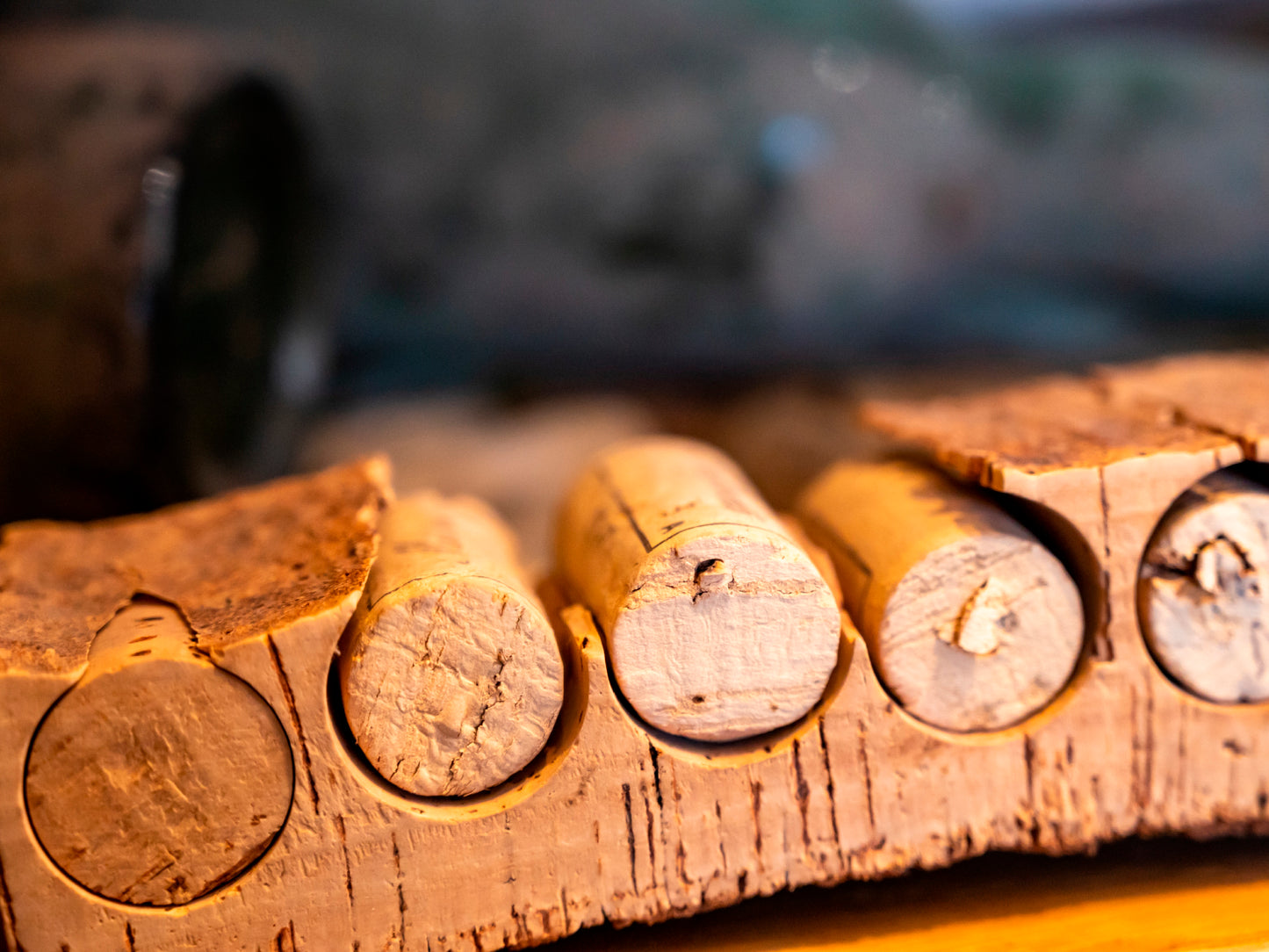
Credit to photo: Shutterstock/PIXEL to the PEOPLE; barmalini
Text by: Symbolic wines
In old times people used many ways of closing the wine vessels – they sealed it with resin and wax, stuffed it with wood and fabric. The most effective way was invented by Mediterranean inhabitants. They found out that the bark of the cork oak tree (Quercus suber) has enough elasticity to fit tightly in a bottle neck or barrel’s bunghole. More than that, this bark was found to have tiny pores that let the wine “breathe” – receive microdoses of oxygen and hence, oxidate.
What’s unique about natural corks
Cork’s cellular structure is made up of tiny, air-filled cells, which gives it its unique compressibility. Cork is harvested from the bark of the cork oak tree, which can live for over 200 years. The first harvest occurs when the tree is about 25 years old, and subsequent harvests can take place every 9-12 years. The tree regenerates its bark, making cork harvesting a sustainable practice. To the modern days the wine corks are the most favorable solution to close the rarest wines. Nevertheless, it has some disadvantages, which alternative corks don’t.

Harvested cork oak bark
What is TCA?
Sometimes, if wine has an unpleasant musty, moldy, or damp smell and taste, they say, it’s corked. This is also called the cork taint. The bad flavor is primarily caused by a chemical compound called 2,4,6-trichloroanisole (TCA), which is the most common culprit, although other related compounds like 2,3,4,6-tetrachloroanisole (TeCA) and 2,4,6-tribromoanisole (TBA) can also contribute to the problem. TCA is most often associated with natural corks, as it can form when fungi or molds naturally present in cork come into contact with certain chlorinated substances, such as those found in some pesticides, wood preservatives, or cleaning agents used in wineries. Cork taint isn't always the cork's fault. TCA and similar compounds can also originate from other sources within the winery, such as barrels, wooden beams, cardboard, or even the winery's air and water supply.
How to detect corked wine?
A wine affected by cork taint will have a distinct musty, damp cardboard, or moldy odor. This aroma is often strong enough to overpower the wine's natural fruit and other desirable aromas. Some people describe it as the scent of a damp basement or wet newspaper. The unpleasant taste often lingers on the finish, making the wine seem less fresh and more lifeless than it should be. The severity of cork taint can vary. In some cases, it’s so mild that it might just dull the wine's flavors, while in others, it can make the wine undrinkable.
Kinds of wine stoppers
Apart from natural wine corks, there are many kinds of other wine stoppers – synthetic and organic. These alternatives have been developed to address some of the issues associated with natural cork, such as cork taint (caused by TCA) and variability in quality. Also, some of them are cheaper and easier to produce which helps to save the natural resources of our planet.
Natural Cork
Single-Piece Natural Cork: Made from a single piece of cork bark, these are the traditional and most common corks. They are favored for their elasticity and ability to seal the bottle effectively while allowing a small amount of air exchange, which can benefit wine aging.
Multi-Piece Natural Cork: These are made from two or more pieces of natural cork bonded together. They are often used for larger bottles or for wines that need longer aging.
Agglomerated Cork
Technical Cork: Made from granulated cork pieces that are compressed and bound together with food-grade glue. These corks are less expensive and often used for wines that are intended for short-term consumption.
1+1 Cork: A hybrid of natural and agglomerated corks, with natural cork discs on the ends and agglomerated cork in the middle. This type combines the benefits of both and is often used for wines with a mid-range aging potential.
Colmated Cork
Colmated Cork: These are natural corks that have their surface pores filled with cork dust and glue. The process improves the appearance and performance of lower-grade natural corks, making them smoother and more impermeable.
Synthetic Cork
Injection-Molded Synthetic Cork: Made from plastic or rubber compounds, these corks are designed to mimic the appearance and function of natural cork. They are consistent in quality, do not suffer from cork taint, and are often used for wines meant to be consumed young.
Extruded Synthetic Cork: These corks are made by extruding synthetic materials into a cylindrical shape. They are typically less expensive and are used for wines with a shorter shelf life.
Screw Caps
Stelvin Closure: While not a cork, screw caps are a popular alternative to traditional corks, especially in New World wines. They provide an airtight seal, preventing oxidation and cork taint, and are easy to open and reseal.
VinoSeal/VinoLok
Glass Corks: These are a newer type of closure, made from glass with a plastic or rubber seal. They are aesthetically pleasing and provide a perfect seal, making them ideal for premium wines.
